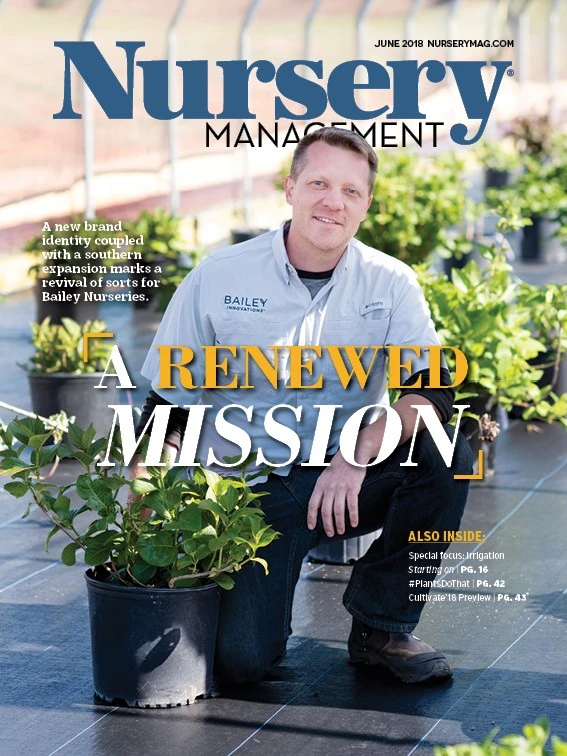
Dr. Cristi L. Palmer is the IR-4 environmental horticulture program manager based at Rutgers University. At IR-4, Palmer manages research activities aimed towards developing information for the registration of tools to manage diseases, pests and weeds, collaborating with scientists and members of the crop protection industry. In addition, Dr. Palmer has facilitated and coordinated research projects on invasive pests and pathogens and on protecting pollinators in ornamental horticulture. These activities aid the green industry by ensuring a broad range of tools are available when needed.
NM: How does the IR-4 Project help growers?Palmer: We assist with developing efficacy and crop safety data so product manufacturers can write or update product labels. We work both with existing products to expand their labels and with new active ingredients. In the environmental horticulture program, we focus in our priority setting on grower needs first.
NM: What are the pathogens, pests and weeds that they can’t manage easily right now with the current tools?Palmer: Once we know our target problems, then we will test potential products that can manage those problems. Those products could be conventional chemistries, biopesticides or anything in between, as long as the product has a label or will have a label with use directions that can be updated based on our research. After the researchers screen the products or active ingredients, we pool all the data together for a specific problem and forward it to the manufacturers, who then write their labels. If the research outcomes demonstrate the active is affecting the registrants will update their use language and provide the revised label to EPA for approval. Once that happens, growers will soon see new or updated products at their distributors, so they can start using the new products.
NM: What are some examples of IR-4’s recent research activities?Palmer: Currently we are working with botrytis, mealybugs and scale, ambrosia beetles, non-oomycete root rots, liverwort, and post-emergent herbicide efficacy. We also have several regional projects targeting key pests and diseases, like thrips, snails/slugs, and nematodes. Many of the projects can be cyclical depending on when new products are needed to replace older ones.
NM: Have there been any recent research outcomes that may lead to new options for disease, pest or weed control? If so, could you please pick a few to highlight?Palmer: Some of the recent products we helped by providing efficacy or crop safety data include Orkestra Intrinsic, a new fungicide combination of fluxapyroxad and pyraclostrobin, Mural (azoxystrobin + benzovindiflupyr) and Segovis (oxathoapiprolin). We’ve also studied, Astun (isofentamid), Altus (flupyradifurone), Broadform (flupyram + trifloxystrobin), Ventigra (afidopyropren). Some of the numbered compounds we’ve been working on include F9110 (powdery mildew), BW165N(botrytis), MBI-110(botrytis), S2200(botrytis), and SP2480 (botrytis), IKI-3106 (mealybug/scale), IKI-3326 (mealybug/scale).
NM: What can attendees expect to learn at your session?Palmer: In addition to talking about results of some of the projects and the new actives coming through, attendees will learn a little about what we do behind the scenes to ensure they have the tools they need to effectively grow quality crops – and how they can participate to make sure we are on track with our research plans. We also have a few changes happening: we’ve changed the name of the program from “Ornamental” to “Environmental Horticulture Program” to better reflect the breadth and impact of what our green industry does. And we will be launching a new website for the entire IR-4 Project in July.
Want to go? “On the Front Lines: IR-4 Project and New Active Ingredients for Plant Success” Sunday, July 15 | 9:30 - 10:30 a.m.| A210
Get curated news on YOUR industry.
Enter your email to receive our newsletters.
Explore the June 2018 Issue
Check out more from this issue and find your next story to read.
Latest from Nursery Management
- [WATCH] Winter is coming...but spring will bring disease
- Sam Hoadley talks about Mt. Cuba Center's latest evaluation of Solidago sp. for the Mid-Atlantic region
- Prices & Market Segments
- Countdown to shutdown
- All in the family
- From growing plants to growing people
- Weed Control Report
- Advocacy in action






